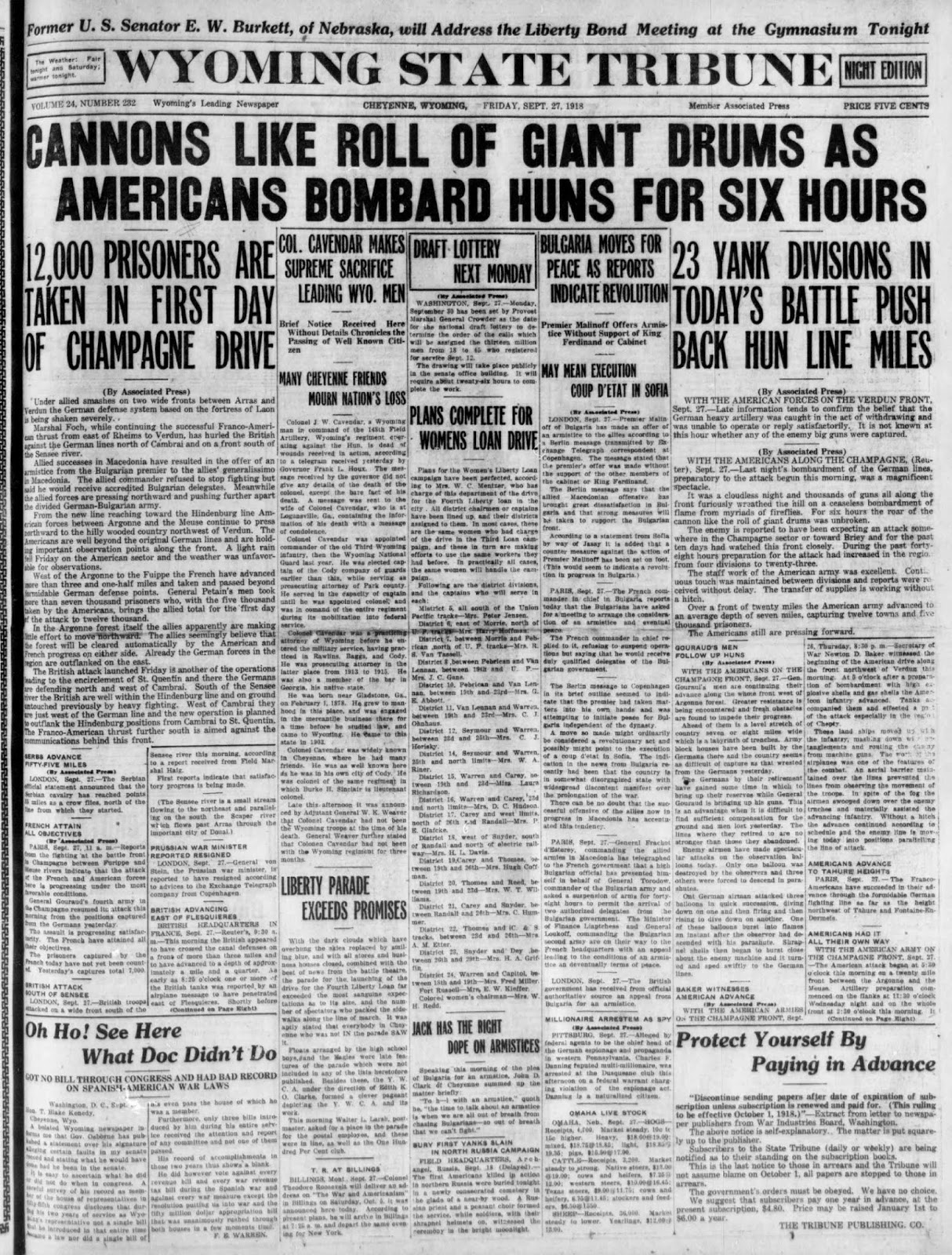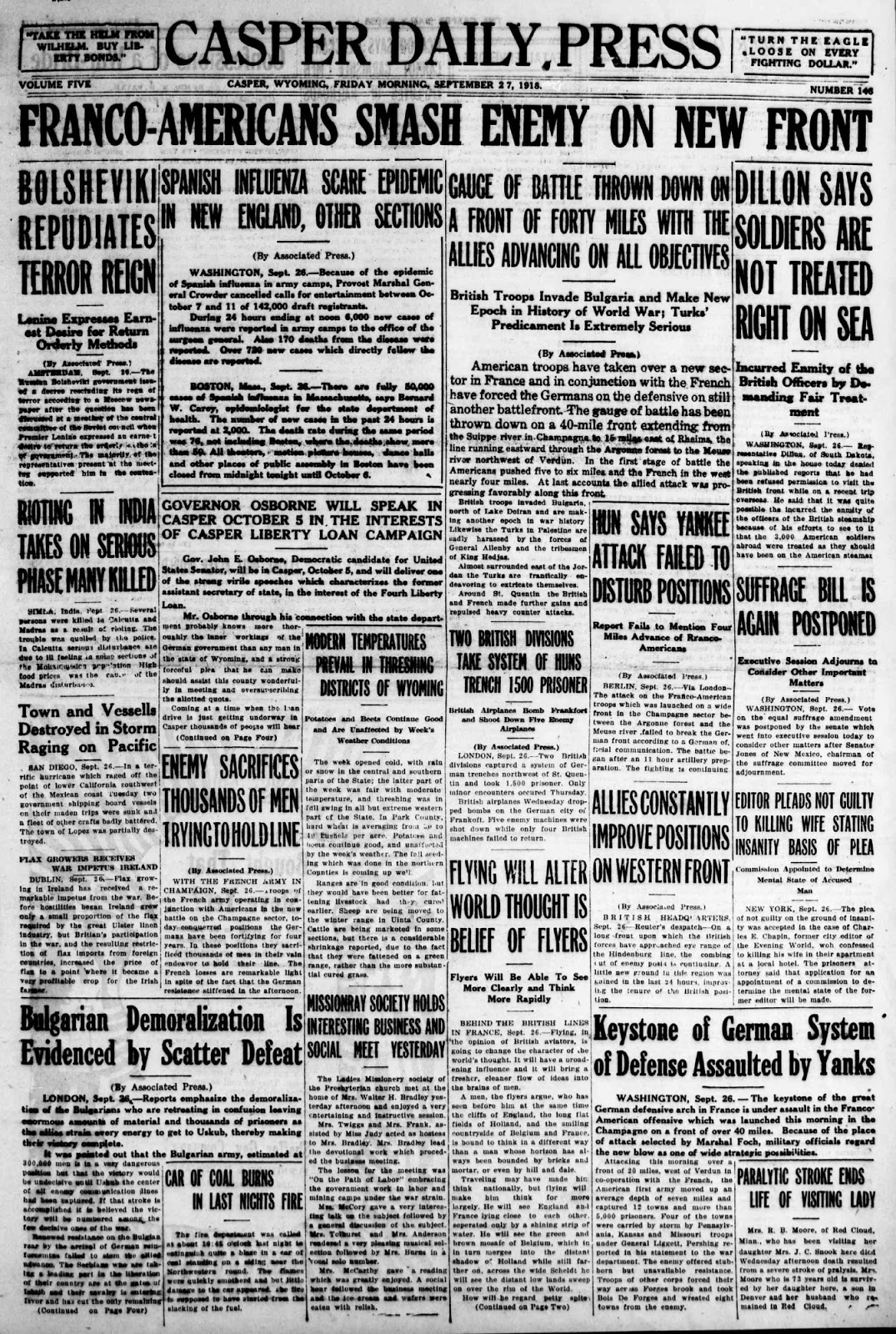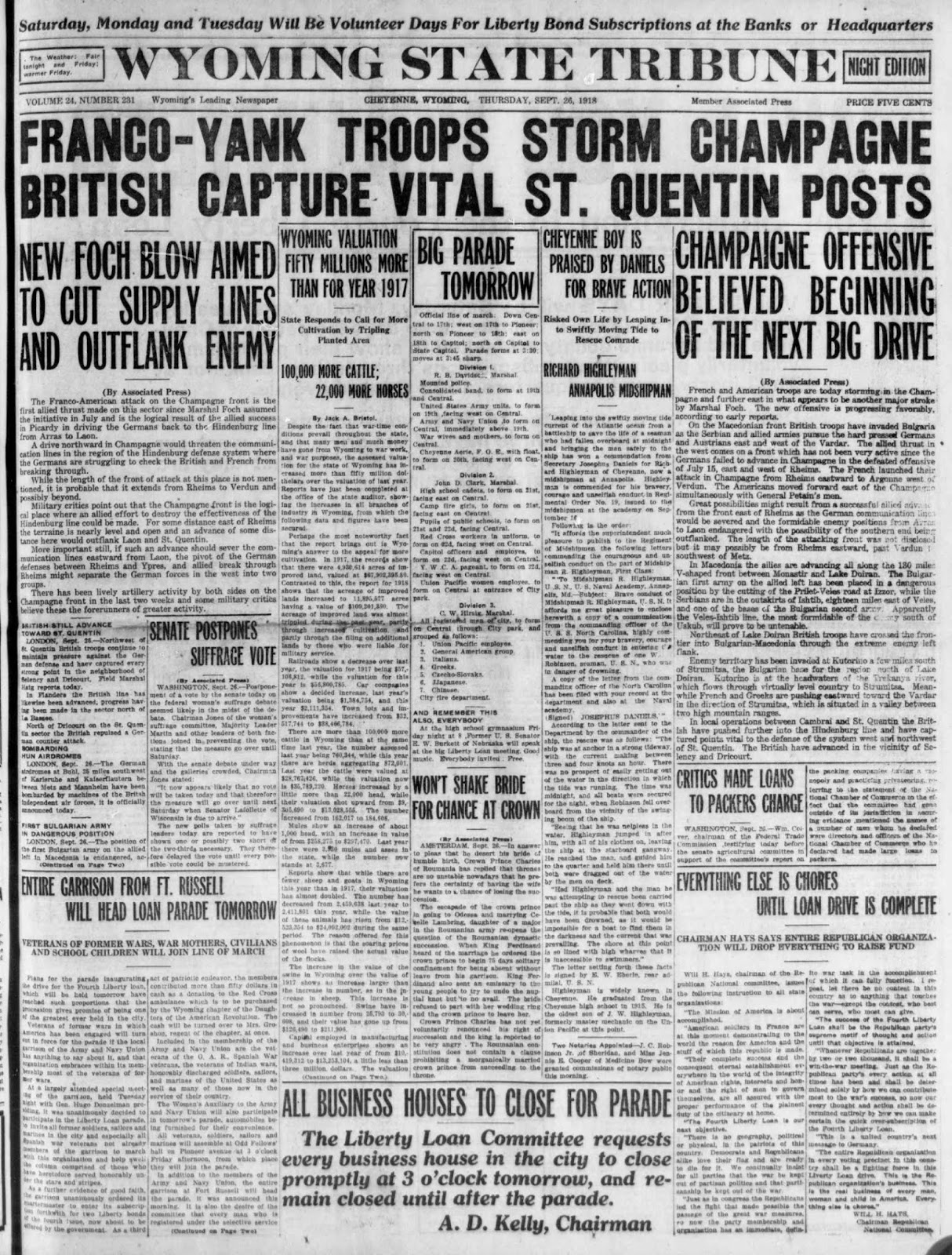Members of the Lost Battalion following their relief.
The dramatic story of the "Lost Battalion" is one of the most remembered, and perhaps most mythologized, stories of the American participation in the Great War.
On this day the U.S. 77th and the 92nd Divisions launched an assault on the Argonne. This was done under a series of orders that had issued earlier, with the issues for this sector of the Allied assault being subject to a fairly unrealistic no retreat order, which read:
It is again impressed upon every officer and man of this command that ground once captured must under no circumstances be given up in the absence of direct, positive, and formal orders to do so emanating from these headquarters. Troops occupying ground must be supported against counterattack and all gains held. It is a favorite trick of the Boche to spread confusion...by calling out "retire" or "fall back." If, in action, any such command is heard officers and men may be sure that it is given by the enemy. Whoever gives such a command is a traitor and it is the duty of any officer or man who is loyal to his country and who hears such an order given to shoot the offender upon the spot. "WE ARE NOT GOING BACK BUT FORWARD!" –General Alexander.
Maj. Gen. Robert Alexander who issued the no retreat order to the 77th Division. A naive order that was not followed by other units in this episode. . . nor should it have been. Alexander had started off his service as an enlisted man after quioxtically enlisting in the U.S. Army as a private following obtaing admission to the bar in 1886. He rose as an enlisted man rapidly before being promoted to the rank of lieutenant in 1889.
Units of the 77th Division ultimately involved in the episode were given their final order very early in the morning of this day, October 2. Maj. Charles Whittlesey* and Spanish American War veteran Cpt. George G. McMurtry**, both Wall Street lawyers in the heavily New Yorker 77th Division were assigned tasks with the objective of the Binarville-LaViergette Road and ordered companies D and F of their unit, the 1-308th Infantry, to remain the along the western ridge along their advance to contain enemy opposition. Two remaining battalions, the 1st and the 2nd of the 308th, were to proceed to Hill 198 and complete a flanking maneuver on German forces located there.
The fighting took place all day until French forces nearby were the recipients of a huge German counteract on Whittlesey's left flakn while the American on his right received a huge counterattack on his right. This left the 308th outflanked unbeknownst to them as the continued to advance on Hill 198. They took the hill and then realized that they were surrounded, in effect, through their advance.* Whittlesey had no way to know what the situation was at that point but surmised that either supporting units had not advanced as far as they had or had retreated, which he thought was contrary to the naive orders the 77th had otherwise been given. By late night they were effectively surrounded. Their situation was suspected by the surrounded unit but not fully appreciated, but hte failure of runners to return the following morning reinforced their slow realization that their situation had become desperate. Efforts to inform higher headquarters through the use of carrier pigeons, a standard practice of hte time, was undertaken. The unit fell under Allied artillery fire which was successfully called off by just that means, as a pigeon named Cher Ami, the surrounded units last, flew through and delivered the message about the unit being under friendly fire.
The surrounded men held off against fierce German attacks over the next several days. German demands to surrender were not responded to. Efforts of the 77th Division to relief the pocket were unsuccessful at great costs. The U.S. ultimately shifted different divisions in to fight the relief effort, and the Germans responded in kind, ultimately even deploying Storm Troopers in the effort. Finally, the 77th effected relief on October 8.
Cpt. Eddie Grant.
The direct costs were enormous in context. Of the over 500 men who were part of the original U.S. assaulting force only 194 came out without injury. 197 were killed. Huge losses were taken in the effort to relief the surrounded unti beyond that. Eight Medals of Honor were awarded to members of the trapped formation, including those to Whittlesey, McMurtry and Cpt. Nelson Holderman. Cpt. Eddie Grant, a former Major League Baseball player, was killed in one of the relief efforts resulting in a plaque in his honor in New York's Polo Grounds.***
Lt. Col. Charles Whittlesey shortly after the relief of his command.
Whittlesey never really recovered from the trauma of the affair. His performance while the unit was trapped was exemplary but psychologically it can be maintained that he was a fragile character unsuited for combat and perhaps for his career. He was a pallbearer for the Tomb of the Unknowns in 1921 and left for a cruise to Cuba only shortly thereafter. After dining with the captain and being reported to be in good spirits, he simply disappeared, with the strong suspicion being that he jump overboard at sea.
__________________________________________________________________________________
*Whittlesey as a Harvard educated lawyer with a patrician air but had been born to working class roots. His father had been a Pennsylvania logger. Perhaps for this reason Whittleseay was a member of the Socialist Party at one time early on, before that party had become fully radical, at which time he resigned in disgust. He was always a sensitive personality who had trouble to some extent with that even prior to the war in this early legal practice.
**McMurtry had been a member of the 1st U.S. Volunteer Cavalry, the Rough Riders, during the Spanish American War and would become a millionaire investor as well as a Harvard educated lawyer following that war. He was one of the most experienced soldiers in the unit at the time of these events.
***Grant was yet another Harvard lawyer, having obtained a law degree in 1909. He had retired as a professional baseball player in 1915 and had opened up a law practice in thereafter in Boston.

















































